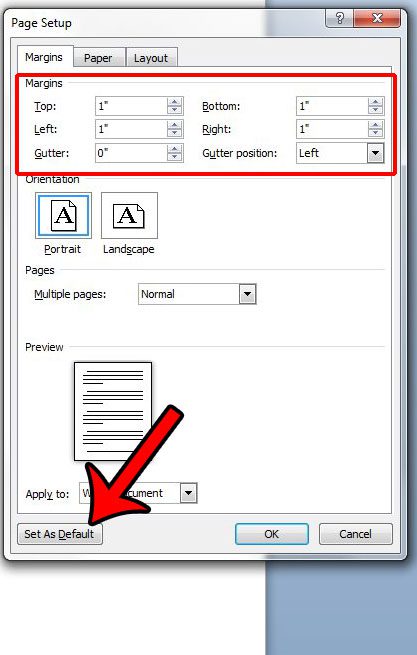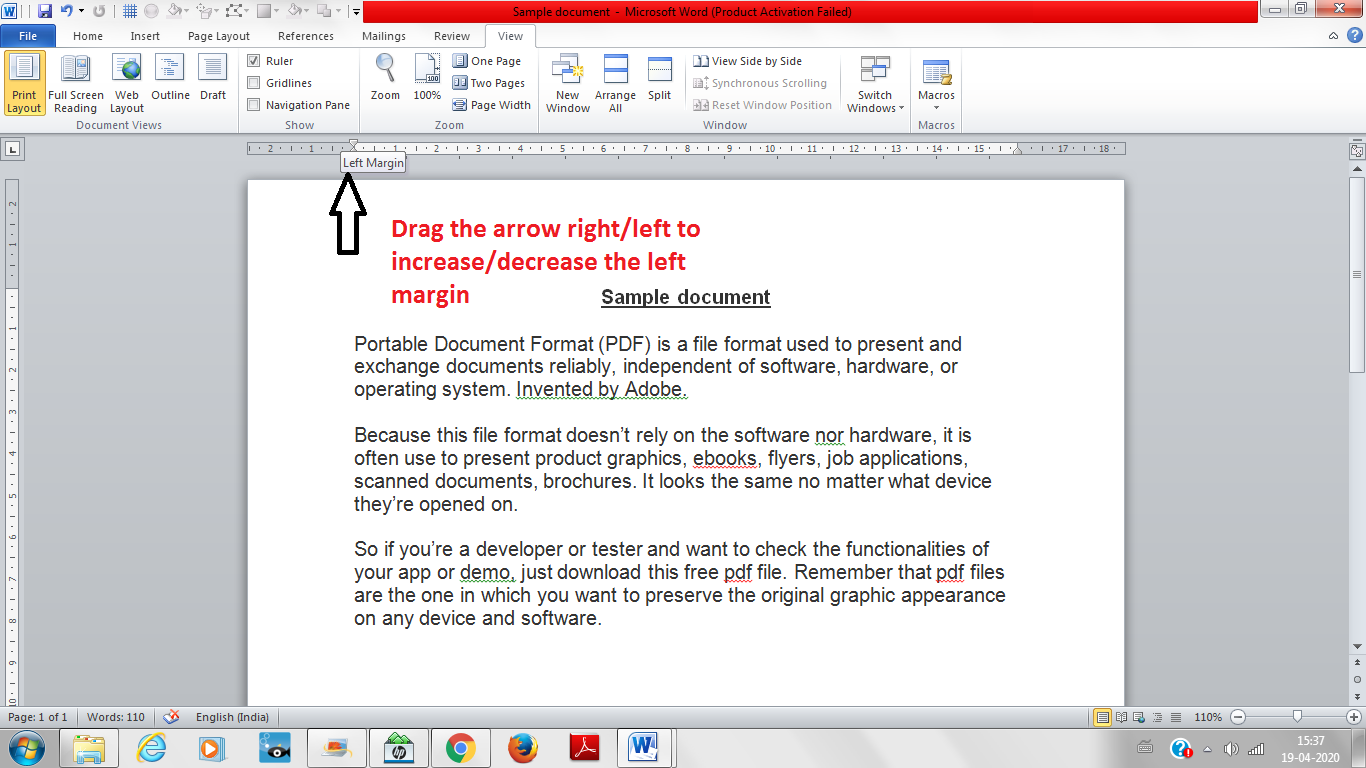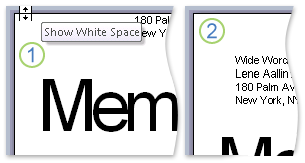

Vertical alignment refers to the position of text between the top and bottom margins of a page. Adjusting Vertical Alignment in Microsoft Word But how do you control the position of text between the top and bottom margins? To do this automatically, you will need to access the vertical alignment options instead. And to apply them, all you need to do is select the relevant text and click the desired alignment. These options are all available in the “Paragraph” section of the “Home” tab in Word.

Align Right – Aligns text with the right margin.Align Left – Aligns text with the left margin of the page.The basic alignment options in Microsoft Word reflect this: If you think about text alignment at all, you probably think of the position of text between the left and right margins of a page. Check out our guide below to see how this works.
How to view top margin in word how to#
Here’s how a Table looks using a standard single line border but increasing the cell spacing from the default, Zero.Īs you can see, the single line table border becomes a twin gridline just by adding cell spacing to the same table.Microsoft Word Tips: How to Control Vertical Alignmentĭo you need to make text appear halfway between the top and bottom of a page in Microsoft Word? Then you need to adjust the vertical alignment. Go to Table | Alignment | Cell Margins | Default cell spacing | Allow spacing between cells.


While cell margins are the space between the text and the edge of the cell, cell spacing puts space around each of the cells.Ĭell spacing has a surprising effect on the look of a Word Table with single line borders. Word’s Table Options have an interesting choice, Cell Spacing. When space is tight, reducing the default left & right cell margins can help fit a table or contents into the available space. Change the Top & Bottom cell margins to separate the lines and improve readability. Here’s a single row, highlighted a little by increasing the top & bottom cell margins.Ĭell margins are useful to separate lines in a table, especially when there’s no gridlines. UNcheck the box ‘Same at the whole table’ then change the margin settings. Select the column, row or cell you want to change then go to Table Layout | Table | Properties | Cell | Options. Table cell margins can be changed for a row, column or even a single cell, but it’s nowhere near the main Cell Margins ribbon button. You can, of course have different margins on different sides: Here’s the large cell margins (left) compared to zero cell margins (right). The margins we’ve selected above are quite large, just to show you clearly how his setting changes your table. In the Table Options dialog that opens, use the spinners to incrementally change each of the four margins, or simply type in the margin that you want into each field Top, Bottom, Left or Right. Then click Cell Margins in the Alignment group. To change the cell margins, we again click in the table and go to the Layout tab on the right. They can be set separately for the top, bottom, and either side of the cells. Cell Margins and Cell Spacing are two important settings in any Word Table but they aren’t used much and not well understood.Ĭell margins are the spaces between your text and the edge of the cell.


 0 kommentar(er)
0 kommentar(er)
